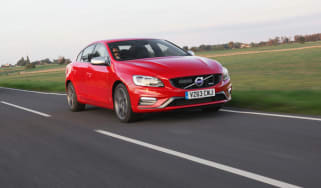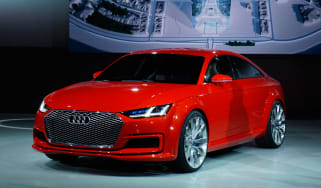Volvo XC70 estate (2007-2016)
“The Volvo XC70 is a practical, luxurious and rugged estate car. It’s expensive, though, and due for replacement soon.”
Pros
- Huge boot
- Very comfortable
- Impressive off-road ability
Cons
- Quite expensive
- Unexciting driving experience
- Petrol engine is expensive to run
The Volvo XC70 is a toughened-up version of the Volvo V70 estate car, boasting a raised ride height, chunky bumpers and optional four-wheel drive. If you need to tackle reasonably rough terrain from time to time, it’s pretty competent in this area – much like the Audi A6 Allroad and Volkswagen Passat Alltrack. Do note, though, that the V70 on which the XC70 is based has now been replaced by the Volvo V90 and a similarly tough version of that car – likely to be called the V90 Cross Country – is thought to be in the pipeline. While XC70 production has now ceased, nearly-new examples should be priced to reflect their outgoing status.
If you want a new(ish) XC70, you’ll have to be happy with a diesel engine – the 300bhp T6 petrol was discontinued mid-way through the model’s life, partly because it struggled to return more than 25mpg. Fortunately, the diesels are strong performers. The entry-level engine is called the D4 and produces 179bhp. Depending on whether you specify front or four-wheel drive, this engine is either 2.0 or 2.4 litres respectively – although its power output remains the same regardless of its size. The top-spec 2.4-litre D5 engine produces 212bhp and is only available with four-wheel drive and an automatic gearbox. Performance across the range is broadly similar, with 0-62mph taking between 8.2 and 9.5 seconds.
Given the size of the XC70 and the performance it offers, running costs are reasonable. The most efficient combination is the front-wheel-drive D4 version with a manual gearbox; in this configuration, it returns 64.2mpg and costs just £30 a year in road tax. Opting for four-wheel drive, the more powerful D5 engine or an automatic gearbox will see road tax rise to at least £110 and at most £180 a year. Economy for the rest of the XC70 range is between 48.7 and 58.9mpg.
On the road, increased suspension height means there’s a fair bit of body lean in corners, but the XC70 glides impressively over bumps and is a supremely competent motorway cruiser. In terms of off-road ability, it sits somewhere between a normal car and a full-on SUV: you’re unlikely to take it up a mountain, but its raised ride height means it acquits itself well over most rough surfaces, particularly if you choose the four-wheel-drive option.
Step inside the XC70 and you’re in for a treat – albeit a slightly old-fashioned one. There’s a comfortable air of solidity and, while the dashboard feels a little outdated compared to the new V90’s, there’s no denying the sense of luxury and build quality on display. Front and rear-seat passengers get excellent head and legroom, while the XC70’s 575-litre boot has a flat floor and is actually slightly larger than the new V90’s.
Towards the end of its life, the XC70 was offered in just two trims, SE Nav and SE Lux. Equipment highlights in SE Nav cars include leather seats, sat nav, cruise control, 17-inch alloy wheels, a DAB radio and Bluetooth connectivity. SE Lux trim adds (for about £1,600) xenon lights, a power-adjustable driver’s seat, 18-inch alloy wheels and a digital display that replaces the traditional speedometer and other dashboard dials.
Safety is excellent, thanks to the XC70’s V70 sister car getting the full five stars in its Euro NCAP assessment. Reliability is likely to be more average: Volvo came 13th out of 32 manufactures in our 2016 Driver power customer satisfaction survey – with a 22nd-place finish for dependability.











